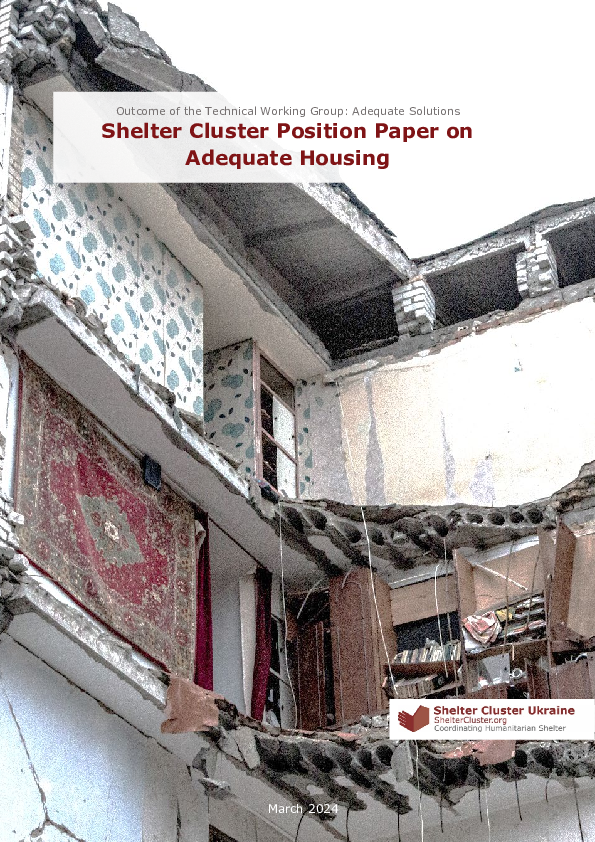Ukraine
Position Paper on Adequate Housing
The paper aims to delineate the effectiveness of Shelter Cluster activities in Ukraine and their potential role in establishing a more long-term approach to addressing the needs of affected populations. Essentially, it delves into discerning the boundaries of the impact regarding Shelter Cluster activities and how stakeholders involved in sustainable solutions and development initiatives can commence and complement their efforts.
“…Humanitarian assistance too often remains stuck in emergency mode long after the acute crisis is over…”1
In essence, this position paper seeks to address the following:
1. Identifying potential gaps in responses and support to affected people: mapping actors and responsibilities for bridging the gap between emergency responses and Durable Solutions.
2. Assessing Shelter cluster activities and how they pave the way for longer-term solutions.
3. Proposing steps for an exit strategy and handover process.
The primary focus is on examining how the shelter cluster's initiatives link to and are complementary to other stakeholders’ interventions and assessing the effectiveness of these activities in fostering Durable Solutions for the affected population from the start.
The information presented in this paper is an outcome of a Shelter Cluster Ukraine facilitated technical working group (TWIG) consisting of the Shelter Cluster Ukraine, IOM, Caritas, NRC, PIN, CRS, HFHI, and UNHCR. This TWIG has been chaired by Caritas Ukraine. Additionally, this paper has been drafted in consultation with those of our TWIG members who also serve as stakeholders in other working groups committed to Durable Solutions in Ukraine.

